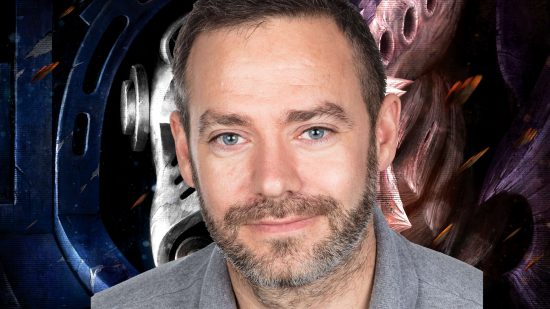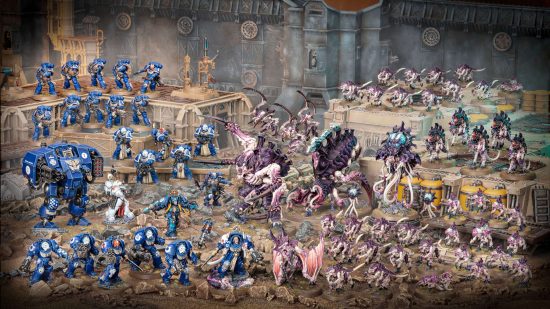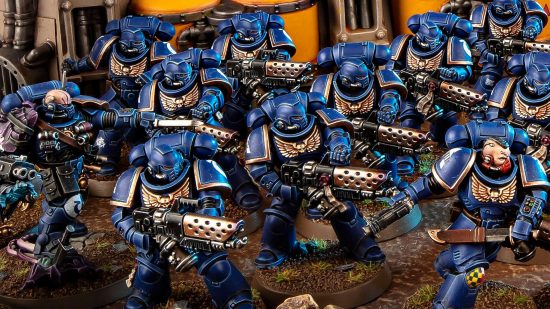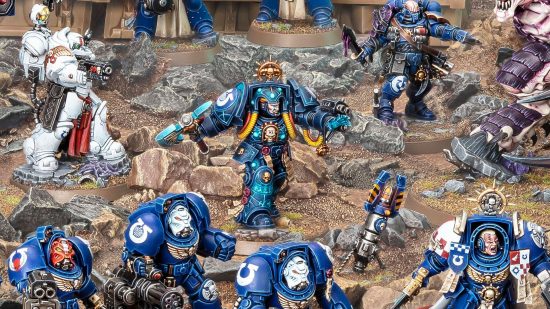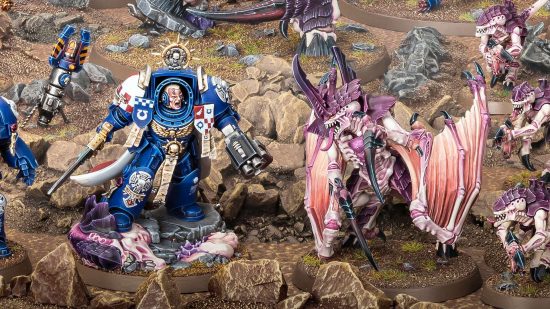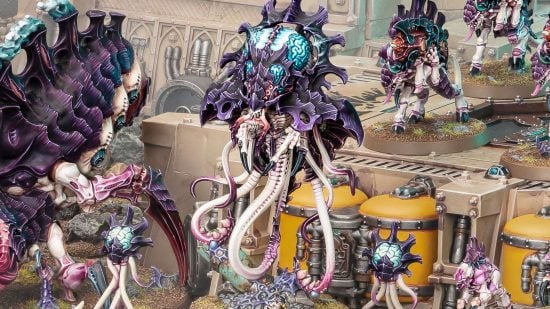Stuart Black is the Warhammer 40,000 Studio Manager at Games Workshop (GW), the man ultimately responsible for the direction, design, and development of the world’s most popular sci-fi wargame. Wargamer spoke to Black about his work at the helm of the huge project to produce the game’s soon-to-be-released 10th edition.
Black has worked at GW for 25 years, rising through the ranks from his first GW job as a sales assistant in 1997 to assume control of the Warhammer 40k design studio in September 2018. He’s lead several teams throughout his career, but the upcoming Warhammer 40k 10th edition may well be his most ambitious project to date.
So how did Black and his team approach the daunting task of overhauling not only the core rules, but the model rules for every single Warhammer 40k faction in one go?
Wargamer: When did rules design work start on 10th edition?
Stuart Black: Summer 2021 was when work started in earnest, especially on the Core Rules. But we always have an eye on future codexes and editions.
What key goals did you set for the edition?
Our biggest goal was to improve the accessibility of the game, and ‘simplified not simple’ was part of that. We also wanted to put the emphasis firmly on the miniatures and their datasheets – players should be able to know what a miniature can do from looking at it.
Too many layered rules break that connection, creating the feeling that all the rules for every unit need to be learnt. We also wanted to find a way to bring the two most popular types of mission together, so players could always play the type of game they wanted to play (The GT Mission pack and Maelstom of War).
We also knew that the lethality levels in the game had become very high, and we wanted to bring this killiness down some to reward different styles of play.
10e gets rid of features that have been part of 40k for decades. Why did they need to go?
We worked hard at the scoping stage to identify what made 40k 40k, and try to tease out things that were integral to the play experience vs things that were familiar or had been there a long time. Once we were clear on the design goals, we looked at every element of the game and evaluated it against those goals and criteria.
It soon became clear that the time had come for some things to retire. Often this was for different reasons – the datasheet format, including stat-line, had several ‘relic’ features that were the way they were because they always had been, right back to Rogue Trader. For example, Leadership being a number players aimed to roll under, while big numbers were good for every other dice roll.

The Force Organisation chart had its roots in 3rd Edition, and was a great way to organise a force when the biggest miniature in the game was a Dreadnought, but it had become quite restrictive. In the last few versions of 40k we made army building increasingly flexible to better reflect players’ model collections.
With this edition we have taken the next step and simplified army construction – although in practice it is more similar to the Arks of Omen Detachment than it first appears.
How much design time was spent doing Math-hammer on spreadsheets?
A lot! We use a whole bunch of tools when designing a new edition, especially when working on the datasheets for the Indexes. There are well over 1000 units in 40k, with a vast range of weapons.
We used some basic statistical and probability-based tools, as well as some more sophisticated techniques to help us tune things so the right weapons are great against the right target, but there are very few weapons that are good against everything. This was part of us making sure every unit and miniature has a role within its faction and a compelling reason to be put on the tabletop.

How many hours of tabletop playtesting went into 10th edition?
Too many to count. We have a wonderful bunch of volunteers out in the community, from top-table players to more hobby-orientated teams, as well as in-house resources. These teams all test for different elements – we want a game that is fun and fair for all levels of player.
Some teams help us get the feel of a unit right, others try to break things and find combinations of rules that have unintended consequences, while others mainly help us with balance.
10th edition 40k seems less lethal than ninth – why is that?
A lethal game rewards certain play styles, strategies or techniques. For example, a key part of previous editions was the concept of trading – a unit moves onto an objective to score it, then the opponent kills it and takes the objective with a unit that then dies, and so on back and forth.
There is nothing wrong with this dynamic, but I think it is better if there are other ways to play. It is also more fun if your models get to be on the table for longer! A lethal game can also lead to players needing very dense terrain setups to provide a level of survivability, which again encourages certain play styles. Like most things, having variety is a good thing.
With detachments gone, how have you made Battleline units compelling choices?
We have looked at every unit in the game, identified its role within its faction, and written rules for it to reinforce that role. Battleline units do tend to have higher Objective Control (OC) values than other units, they can each be taken six times in a force rather than three, but most importantly they’ll each have a rule or ability that makes them an interesting pick to have in your force.
What sources outside Warhammer 40k inspired you when working on this edition?
Whilst most of the inspiration comes from 35+ years of 40k rules and lore, we are always thinking about how to make the best experiences for our players. As the wider world of gaming becomes better understood and the underlying theories of fun and games design become more codified, inspiration can come from all kinds of things outside of miniature gaming.
For example, understanding loss aversion in human psychology made us think hard about when to use randomness. In the right circumstances, randomness adds tension and excitement to decision-making, but at other times players can feel a higher level of disappointment from rolling a one!
What was the toughest part of the design to get right?
The two toughest areas are balancing the need for simplicity and accessibility with depth and long-term engagement, and keeping the rules fun, balanced and aligned with the background.
What are you most proud of from the 10th edition design?
Cheesy – but I am most proud of the awesome team that worked so hard to make this edition of our favourite game!
